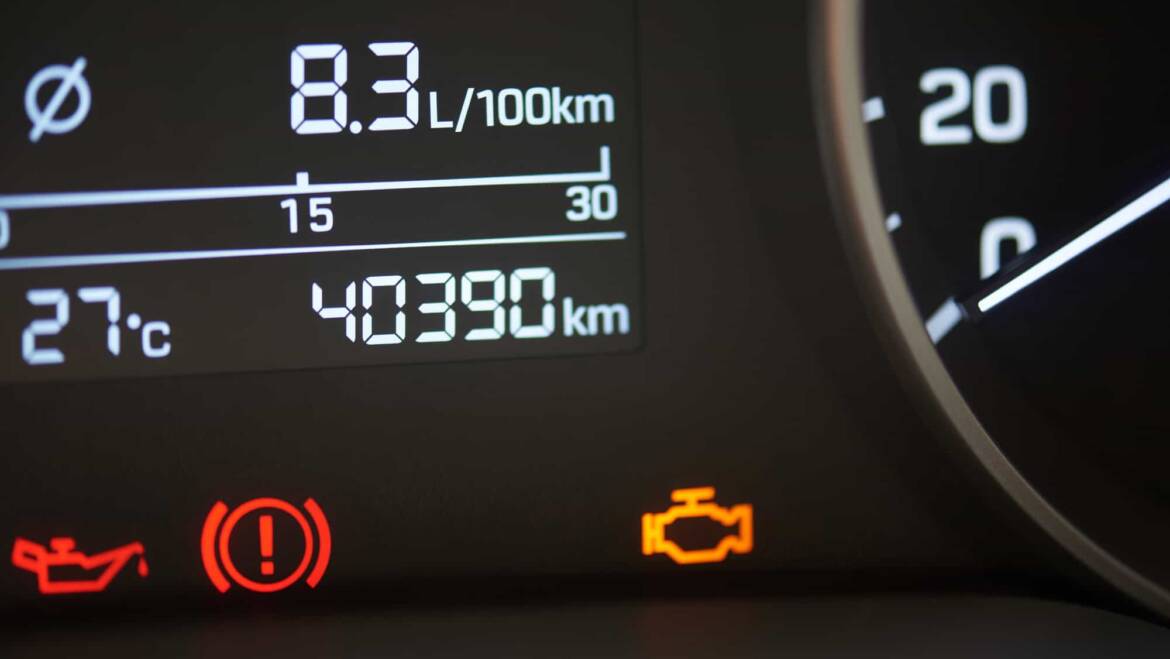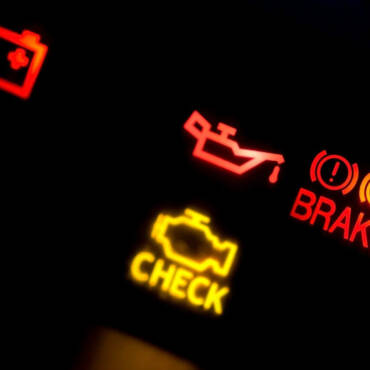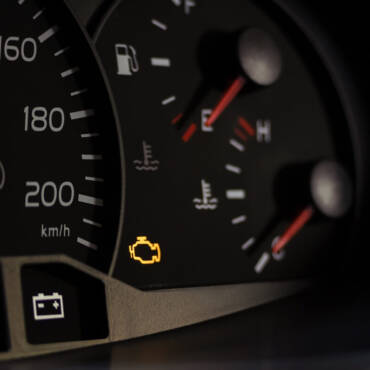Every car owner has experienced that unsettling moment when the check engine light comes on. This dashboard icon can signal various issues with your vehicle’s performance, from a faulty oxygen sensor to problems with the emissions system. But can a low oil level cause the check engine light to turn on? Is it a reason to start googling oil change near me? Let’s investigate the relationship between low oil and the check engine light and provide helpful tips for maintaining your car’s engine health.
Low Oil and Check Engine Light
While low oil levels can affect engine performance, it is a common misconception that low oil levels will cause the check engine light to come on. In reality, the low oil level has its own dedicated dashboard icon, resembling a tiny oil can. However, low oil pressure, which can be caused by low oil levels, can be a reason for the check engine light to turn on. Low oil pressure can seriously interfere with your car’s performance and disable your vehicle if not addressed immediately.
Effects of Low Oil on Engine Performance
Low oil levels can negatively affect engine performance, including overheating and increased wear and tear. When the oil level is too low, the engine may not have enough lubrication to reduce friction between its components, leading to increased heat generation. Overheating can cause damage to the engine and, in severe cases, result in complete engine failure.
Also, low oil levels can lead to increased wear and tear on the engine’s components, as insufficient lubrication protects them from friction. This can lead to decreased engine performance, shorter component lifespans, and higher repair costs. If those aren’t reasons to find a 10 minute oil change near me, we don’t know what are.
Finding Oil Change Services
To maintain optimal engine performance and avoid issues that may trigger the check engine light, it’s crucial to adhere to the recommended oil change frequency. Most experts suggest changing your oil every 5,000 to 7,500 miles, depending on your vehicle’s make, model, and driving habits. To make the process of oil changes as convenient and efficient as possible, consider using Strickland Brothers 10 Minute Oil Change. By searching for a drive-thru oil change near me, you can find a nearby Strickland Brothers location and benefit from their quick and professional service.
Choosing Strickland Brothers 10 Minute Oil Change offers several advantages. First, our drive-thru service is designed to save you time, allowing you to get back on the road quickly without waiting for an appointment. Second, Strickland Brothers is dedicated exclusively to oil changes and associated services, ensuring that our technicians are specialized and highly skilled in this area. Most importantly for many, Strickland Brothers 10 Minute Oil Change is a more cost-effective option compared to others, which tend to charge premium prices for oil changes.
Why Is the Check Engine Light On? 5 Possible Reasons
There are dozens of terrifying things that could happen to your car. You could get into an accident. Your transmission could fail while driving on a busy highway. Your brakes could start to fail in the middle of a long trip or during inclement weather. In comparison, when your check engine light comes on, you might feel unsettled but you won’t feel panicked and as a result, you may choose to delay some important auto repairs your car needs to stay in good condition.
1. A Problem with the Emissions System
Your emissions system is a complicated feature designed to process waste products and harmful byproducts of your vehicle’s combustion engine, and either convert or emit them safely. If there’s a problem with it, it could interfere with your vehicle’s safety, emission patterns, and fuel efficiency. Your check engine light could be warning you that there’s a “general” problem here that needs to be addressed it could also be referring to individual components, which we’ll cover momentarily.
2. Overheating
If your check engine light has appeared due to overheating, you’ll probably notice other signs, such as a high-temperature gauge or smoking from under the hood. This is a potentially severe problem, so look for the warning signs, reduce your speed, and attempt to reduce your engine temperature by turning on the heat as a release. If this isn’t enough to slow the process, pull over and call for help.
3. Low Oil Pressure
Low oil pressure is a common cause of a check engine light turning on, and it can seriously interfere with your car’s performance. Usually, if this is the case, your oil light will also appear. Low oil pressure is often the result of wear and tear in your car’s oil pump, or improper oil change procedures resulting in overfilling or getting air in the pump. In any case, low enough oil pressure will disable your vehicle, so get this repaired immediately.
4. A Faulty Oxygen Sensor
Your oxygen sensor is a piece of equipment that monitors any unburned oxygen that comes out of your exhaust. This is important because it helps your car monitor fuel consumption accurately—if one of your sensors goes out, it could cause the check engine light to come on. You have between two and four sensors in your car, but one missing could reduce your fuel efficiency as well as your emissions, so it’s important to swap in a new one as soon as possible. Letting the problem go too long could damage your catalytic converter, which is a much more expensive repair.
5. A Faulty Gas Cap
Your gas cap may not seem very important, but it is. It keeps your fuel from evaporating, which in turn increases your fuel efficiency and reduces your emissions. If sealed improperly, you can correct it on your own. If it’s cracked or damaged, you’ll have to buy a new one (fortunately, they’re relatively inexpensive). If this ends up being the problem your check engine light detects, consider yourself lucky it can be destructive, but isn’t as severe as the other issues on this list.
Preventive Maintenance Tips
In addition to regular oil changes, several other preventive maintenance measures can help you avoid issues that may trigger the check engine light:
- Regularly inspect and replace air filters: Clogged or dirty air filters can reduce engine performance and fuel efficiency. This can be done at a drive-thru oil change service along with other maintenance.
- Check and maintain proper tire pressure: Underinflated tires can reduce fuel efficiency and cause uneven tire wear.
- Replace worn-out or damaged belts and hoses: These components are essential for various engine functions and should be inspected and replaced when necessary.
- Schedule routine tune-ups: Regular tune-ups can help identify and address potential engine problems before they cause more significant damage.
- Monitor fluid levels: In addition to engine oil, regularly check and maintain the levels of other essential fluids, such as coolant, transmission fluid, and brake fluid.
- Address dashboard warning lights promptly: Ignoring warning lights can lead to more severe problems and higher repair costs in the long run. According to the stats, Americans spent almost $600 each on vehicle repairs and maintenance in 2021 — and that’s not a group you want to be part of!
Final Thoughts
While low oil levels do not directly cause the check engine light to come on, they can still have detrimental effects on your engine’s performance and lifespan. Regular oil changes and preventive maintenance measures can help you avoid issues that may trigger the check engine light, ensuring your vehicle stays in optimal condition. By seeking convenient oil change services, you can protect your engine and enjoy a smooth and safe driving experience.




